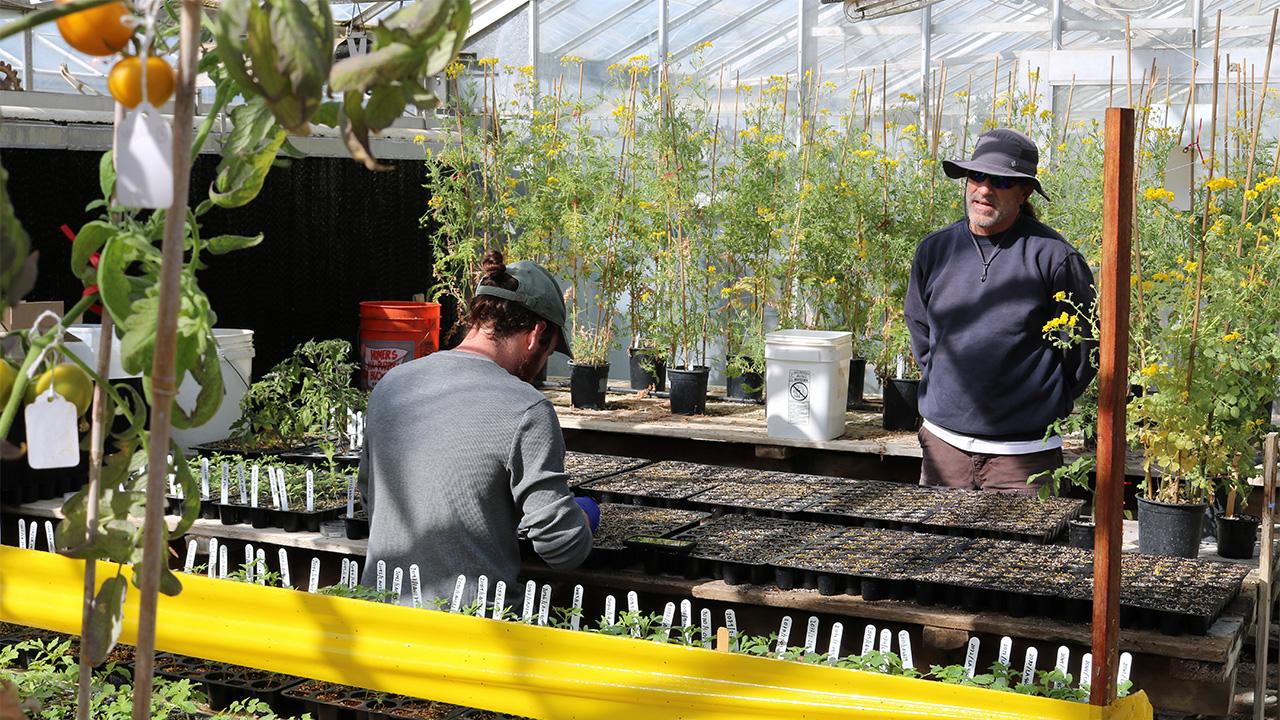
Tasty tomatoes: You can grow your own!
Market-changing research is rooted in UC Davis history
Tomatoes are not native to North America, but they have become an important part of our cuisine, economy and back-yard gardens. At UC Davis, the C.M. Rick Tomato Genetics Resource Center is an important source of breeding lines that other scientists use to create the varieties grown commercially here and around the world.
In the 1960s, two scientists at UC Davis developed processing tomatoes and a machine harvester that revolutionized the industry in California. Now, tomatoes for both canning and fresh use rank No. 9 in market value statewide, earning producers $1.46 billion in 2022, according to the state Department of Food and Agriculture. Here in Yolo County, they’re the most valuable agricultural product of any kind, surpassing grapes, almonds, cattle and dairy.

Those tomato starts that you pick up at this year’s Picnic Day? Their seeds were planted back in late March, and they grew under the watchful eyes and careful hand-watering of greenhouse staff led by Vincent Bikoka and Aaron McKee-Ota.
“We planted 3,000 seeds for each of two tomato varieties,” said Eric Haddix, who manages a set of greenhouses where the tomatoes are grown.
Haddix and his staff have spent many hours planting the seeds, watering and fertilizing the seedlings, and preparing the little plants for Picnic Day. They’ll be about three weeks old when placed into the hands of visitors.
Growing tomatoes is fun!
People line up early in the PES courtyard to get their Picnic Day tomato starts! The give-away begins at 9 a.m. and will continue until we run out.
Varieties this year are Celebrity Plus, a large, firm, flavorful slicer that yields well and is disease resistant; and Super Sweet 100, a cherry tomato that will produce abundantly until the first frost.
It’s best to wait to plant tomatoes outdoors until danger of frost has passed – it could kill your little plant! Depending on where you live, you may get a spring frost as late as May or even early June, so check your local conditions.
In the Central Valley and Bay Area, tomatoes can be planted outdoors now. Otherwise, plant your starts in a small pot with some room to grow, and set it by a sunny, south-facing window. Tomatoes love full sun and regular watering!
For more detailed instructions, including how to get your little guy ready to plant outdoors, see this excellent resource from UC Agricultural and Natural Resources. For your needs, the most important information starts toward the bottom of page 5.
More information about growing tomatoes and other vegetables is at the UC Davis Vegetable Research and Information Center.
Is it a fruit or a vegetable?
You can learn more about tomatoes during Picnic Day at the Rick Center’s exhibit next to the tomato give-away. The Tomato Genetics Resource Center offers information about the plant’s fascinating history, which starts in South America. Our experts will be there from 9 a.m. to 12 p.m.; they can talk about tomatoes’ ability to deal with a variety of problems including pests, diseases and growing conditions that people see here in California.
Test your knowledge by taking the Tomato Trivia Quiz. The answers will surprise you – and if you’ve read this article, you’ll be prepared to answer at least three of the questions!

Media Resources
- Trina Kleist, UC Davis Department of Plant Sciences, tkleist@ucdavis.edu, (530) 754-6148 or (530) 601-6846
